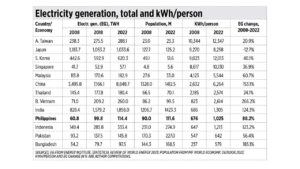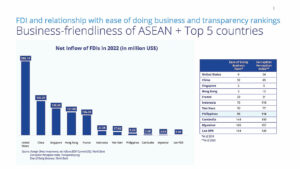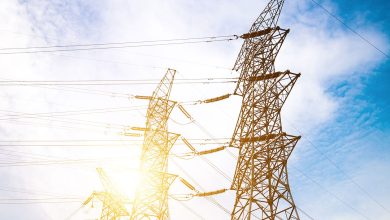Energy at SONA 2023 and electric cooperatives

At his second State of the Nation Address (SONA) last week, President Ferdinand Marcos, Jr. said, “We finally have a Unified National Grid, with the interconnection of the Luzon, Visayas, and Mindanao grids… However, 68 grid connection projects are much delayed, according to the ERC’s count. We are conducting a performance review of our private concessionaire, the National Grid Corp. of the Philippines (NGCP). We look to NGCP to complete all of its deliverables, starting with the vital Mindanao-Visayas and the Cebu-Negros-Panay interconnections.”
Good points, Mr. President.
The NGCP is the only remaining private monopoly nationwide. All other existing monopolies are geography or province-based, like electric cooperatives (ECs) and private distribution utilities (DUs). NGCP is the transfer of a state monopoly to a private monopoly and should be subject to public audit and oversight.
Below are four reports showing that the NGCP has evaded such audit and disobeyed a number of its franchise responsibilities.
First are reports from the BusinessWorld archives, 2017-2019: “NGCP now expects unified power grid by 2020” (July 5, 2018), “NGCP seeks ERC approval to procure ancillary services from power firms” (July 25, 2018), “NGCP reveals reasons for delayed IPO” (April 4, 2019), “Energy chief slams NGCP for refusing inspection of control center” (Nov. 29, 2019), and, “NGCP a step closer to backdoor listing” (Dec. 23, 2019).
Second are these reports from the Philippine Daily Inquirer archives, 2012-2015: “NGCP lines up 6 major transmission projects” (Feb. 27, 2012), “NGCP still up for IPO; preparations ongoing” (Aug. 4, 2013), “Osmeña: NGCP failed to detect power supply problem” (Jan. 23, 2014), and “ERC orders audit of NGCP performance” (Feb. 6, 2015).
Third is a column by former Finance Undersecretary Romeo Bernardo, “The way forward for the power industry,” BusinessWorld, Jan. 26, 2014: He wrote, “… the systems operator National Grid Corp. of the Philippines fully contracts what the system requires. The establishment of a reserve market has been long delayed.”
Fourth, the Energy department’s Department Circular (DC) 2017-12-0016, “Adopting the guidelines for the performance assessment and audit of all power generation, transmission and distribution systems and facilities” (Dec. 28, 2017), and DC 2019-12-0018, “Adapting a general framework governing the provision and utilization of ancillary services in the grid” (Dec. 4, 2019).
From the above titles alone, it is clear that the NGCP has disobeyed or delayed implementation of key projects like early nationwide interconnection of the grid, doing an initial public offering (IPO), the procurement of firm contracts for ancillary services (AS), and not heeding the call for audit by the Energy department.
Former Energy Secretary Alfonso Cusi persisted on calling for an NGCP audit but his boss, former President Rodrigo Duterte, did not back him up, so nothing happened. Current Energy Secretary Raphael Perpetuo Lotilla has called for an NGCP audit, and he is lucky that his boss, President Marcos Jr., is backing him up, and even mentioned it in his SONA, so audit results should be available in a few months.
I have made my own assessment to see if NGCP has helped or hindered the fast expansion of Philippines power generation. I made a table looking at electricity generation in Asia. Group A are those countries with 2,000+ kWh/capita in 2008, and group B are those with below 1,000 kWh/capita. I chose 2008 as the baseline pre-NGCP because its franchise operation started in January 2009. Then I computed the percent change in power generation from 2008 to 2022.
Group B countries have a low base or a low level of power generation and, hence, percent changes over a decade or more are usually high compared to Group A countries which came in with a high base. The Philippines has had an expansion of 88%, the second lowest out of six countries after Pakistan with just 56% expansion.
From the numbers, I would say that the NGCP has hindered faster expansion of power generation in the Philippines. Being a big nationwide monopoly with lots of fiscal incentives and other privileges that are not available to other sub-sectors of the energy sector, it should have wide leeway to encourage more power generation. But in the absence of a firm contract in AS, there has been delayed transmission for power plants already in operation, plus hesitancy to build new plants for fear of non-available transmission lines.
PROBLEMATIC ELECTRIC COOPERATIVESRecently I saw reports of municipal mayors and their people complaining about their electric cooperatives (EC) giving them lousy service — high electricity prices, occasional or frequent power interruptions. Among these ECs are Batangas Electric Cooperative (Batelec I), and First Laguna Electric Cooperative, Inc. (Fleco).
Nasugbu, Batangas Mayor Tony Barcelon, and 10 out of 11 municipal mayors in Laguna under Fleco, led by Pakil, Laguna Mayor Vince Soriano, are very vocal about the expensive electricity and bad services of these two ECs. Some mayors and residents want their municipalities to be served by Meralco and not their ECs.
In previous columns about ECs, I have argued for consolidation and corporatization of all ECs in the country. Many ECs have little financial discipline because they are under monitoring by the National Electrification Administration (NEA), a political body. Private and corporate DUs on the other hand, are monitored by the Securities and Exchange Commission, along with all other corporations in various sectors and sub-sectors of the economy. Because the NEA is a political body, politics usually prevail, not the financial stability and customer service of the ECs.
The NEA was established in 1969 or 54 years ago. More than half century and it still pampers many ECs that still ask for subsidies and some government support, like forever children in need of adult political supervision. We invite private businesses to invest in the countryside but many ECs themselves cannot finance their own investments in robust distribution systems.
In my province alone, Negros Occidental, there are three ECs — Noneco, Ceneco and Noceco — plus there are two ECs in Negros Oriental — Noreco I and Noreco II. One island and five entities, five separate boards, five presidents and general managers. I checked the Facebook page of Noneco and saw there were lots of “emergency power interruption in…” postings and advisories. Not good.
The Energy Regulatory Commission (ERC) requires ECs and distribution utilities (DUs) to undergo a confirmation process of pass-through charges every three years, because of its heavy workload with about 140 different entities to monitor.
With consolidation and corporatization of ECs nationwide, like having only one DU in Negros, the ERC can do more with fewer regulated companies. The cost of regulation, cost of capitalization, and operating costs can go down, which can translate to lower electricity prices, less service interruptions, and a more stable business environment.
Bienvenido S. Oplas, Jr. is the president of Bienvenido S. Oplas, Jr. Research Consultancy Services, and Minimal Government Thinkers




